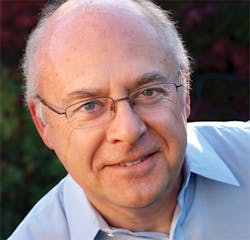
In case you hadn't noticed, the momentum of solid-state lighting and illumination is growing. I mentioned this last month in the context of colored lighting. But, after years of anticipation, the market for white-light solid-state illumination is starting to take off, driven by advances in the technology and production costs combined with governments that are very favorably disposed toward energy-efficient lighting solutions. White-light products were prominently displayed along the aisles of the LED Japan (Yokohama) event last September, and the associated "Strategies in Light" conference was sold out as engineers and marketers try to figure how best to address this market. But despite the fact that the number of white-light solid-state lighting products and installations are growing (see cover), many challenges remain to be overcome-not least of which is cost-before LED-based light bulbs become standard in our homes. You can read about the state of the technology on page 33, and find out more about this exciting market during the 2011 Lasers & Photonics Marketplace seminar next January; visit www.marketplaceseminar.com for information or to register.
In the lab (and unlikely to become standard in our homes), femtosecond lasers enable time-resolved spectroscopic research techniques, and pump-probe spectroscopy is now routinely used to study the dynamics of ultrafast processes. In a basic pump-probe experiment, the output from a single laser is divided into two beams. Recent developments, however, have enabled use of two higher-energy and independent systems with pulses synchronized to within less than 200 fs (see page 39). And in the realm of optical integration, silicon photonic devices seem promising solutions for intra- and interchip applications. Key to their adoption, though, will be the power efficiency of these devices. A CMOS-compatible optical receiver based on a hybrid high-speed germanium photodetector exhibits the (currently) lowest-energy-per-bit of such a device, according to the researchers (see page 43).
About the Author
Stephen G. Anderson
Director, Industry Development - SPIE
Stephen Anderson is a photonics industry expert with an international background and has been actively involved with lasers and photonics for more than 30 years. As Director, Industry Development at SPIE – The international society for optics and photonics – he is responsible for tracking the photonics industry markets and technology to help define long-term strategy, while also facilitating development of SPIE’s industry activities. Before joining SPIE, Anderson was Associate Publisher and Editor in Chief of Laser Focus World and chaired the Lasers & Photonics Marketplace Seminar. Anderson also co-founded the BioOptics World brand. Anderson holds a chemistry degree from the University of York and an Executive MBA from Golden Gate University.